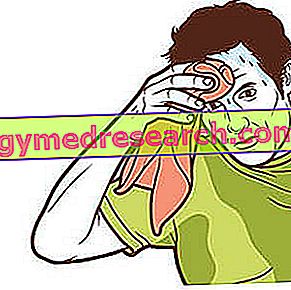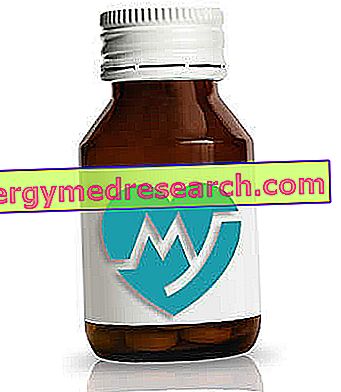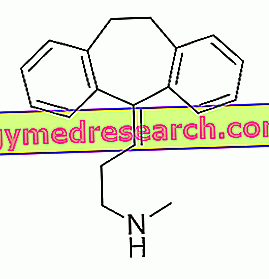What is Bromidosis?
Bromidrosis is a condition characterized by the emanation of a particularly unpleasant skin odor, linked to the bacterial fermentation of the often abundant secretion of the sweat and / or apocrine glands.

Bromidrosis takes on pathological aspects if the odor is particularly intense in quantity and quality or if it significantly interferes with relationships and social activities.
The sweat that reaches the skin surface is initially odorless: excessive secretion from the eccrine or apocrine glands is decomposed by bacteria naturally present on our skin, which produce degradation substances that give rise to individual odors.
Some conditions can favor the onset of bromidrosis, such as concomitant dermatological pathologies (eg: erythrasma, intertrigo), metabolic or general diseases (trimethylaminuria, Diabetes Mellitus, obesity), ingestion of certain foods (spices, garlic, onion), taking of particular drugs etc.
The most effective solution to prevent this condition is to try to reduce sweat to a normal level: there are several treatment options that allow you to manage bromidrosis.
Bromidrosis management
For a correct management of bromidrosis it is important to distinguish the subjective evaluation of the bad smell from the actual skin pathology: subjects that mask body odor should understand that the symptoms cannot be eliminated until the basic conditions are treated .
Sweating control and thorough cleansing are often not enough; therefore, it is necessary:
- Check the factors that favor bacterial proliferation: axillary depilation, choice of breathable socks and shoes, etc.
- Use products that inhibit bacterial growth.
- Keep the skin of the area dry (such as the axilla in apocrine bromidrosis).
Hygiene and topical therapy are the main treatment options for mild cases of bromidrosis and may include the following actions:
- armpit washing at least twice a day with germicidal soap;
- regular hair removal to prevent the accumulation of bacteria and sweat on the hair shaft or electrolysis to remove the follicle;
- prompt removal of sweaty clothing;
- use of topical deodorants;
- treatment of coexisting dermatological diseases (bacterial or fungal infections favored by skin alteration).
The treatments cited do not offer a definitive cure for bromidrosis and the results can be partial or of short duration. A visit to the specialist doctor can provide permanent treatment options that include surgery such as removal of apocrine sweat glands by surgical excision or superficial liposuction.
In the event that hyperhidrosis is a determining condition for bromidrosis, it would be useful to treat the primary cause of excessive sweating early; therefore the following possibilities can be taken into consideration:
- use of anti-perspirants;
- anticholinergics or beta-blocker drugs;
- iontophoresis;
- botulinum toxin injection;
- surgery (surgical sympathectomy, superficial liposuction ...).
Treatments
Treatment of Bromidrosis secondary to concomitant diseases
In the event that bromidrosis is caused by concomitant diseases, the treatment must be aimed at resolving the pathological condition that causes the disorder by secondary effect.
Some examples:
- it is important to identify and treat coexisting skin diseases such as intertrigo, erythrasma and axillary trichomicosis;
- follow a specific therapy in case of diseases of the endocrine system;
- weight loss is suggested for obesity, etc.
Bromidrosis: symptomatic therapy
Before proceeding with the approach to clinical-therapeutic methods, indicated to definitively resolve bromidrosis, it is important to consider the degree of impairment of quality of life, as well as the patient's expectations and treatment goals.
Topical hygiene and antibacterials
The first therapeutic measures aim to control the proliferation of the bacterial flora and to keep the skin surface dry.
Improving hygiene is very useful in case of apocrine bromidrosis and implies: proper cleaning of the skin, the prompt removal of sweaty clothing and the use of a topical deodorant (which covers the odor and can be associated with an active which limits bacterial growth). Bromidrosis often resolves with an accurate cleansing: generally, daily baths are effective with a liquid soap containing chlorhexidine, triclosan or farnesol (antibacterial agents) and the application of preparations based on aluminum chlorides (present in common antiperspirant creams) . Some antiseptic soaps can be used in order to hinder bacterial growth and get relief from bad odor.
The regular depilation of hair prevents the accumulation of sweat from bacteria on the hair shaft. Electrolysis hair removal could also be considered in order to minimize bacterial growth.
The use of topical antibiotics, such as clindamycin and erythromycin, can produce clinical benefit by limiting the growth of bacteria that contribute to the decomposition of apocrine secretions (they release fatty acids with a characteristic odor).
Topical antibiotics should only be used when other antiseptics are not effective because they are associated with a greater risk of bacterial resistance.
Antibiotic | Action |
Clindamycin | Macrolide antibiotic: inhibits bacterial growth by binding to the 50S ribosomal subunit and by blocking the dissociation of peptidyl t-RNA (stops protein synthesis). |
Erythromycin | Macrolide antibiotic which reversibly binds to the 50S subunit of the bacterial ribosome, inhibiting the translocation phase in protein synthesis, performed by the ribosome itself. |
A solution to bromidrosis could also be offered by systemic anticholinergic drugs, which can reduce sweating (they act on the nerves of the sympathetic nervous system and inhibit sweat, blocking the acetylcholine transmitter), but they are not commonly used for the significant adverse effects that can induce (blurred vision, constipation, difficulty urinating, dry mouth ...).
There are also special garments such as pads and stockings with ions or silver threads, which guarantee a short safety time against odors. For example, anti-sweating shirts help combat the formation of unpleasant halos on clothing next to the use of aluminum chloride and underarm pads. Special clothing allows for temporary and natural help against excessive sweating, making it possible not to use medicines or surgery.
Anti-perspiring
The anti-transpirant agents are products, mostly based on aluminum salts (at variable concentrations), capable of drastically inhibiting sweating and which can be applied externally on the skin. These topical substances include as main ingredients some metal compounds, such as aluminum hydroxychloride or aluminum sulfate, which perform an astringent action going to hinder the secretion of the sweat glands. Unlike deodorants, anti-perspirants inhibit sweat production, as well as prevent odors.
Their use can reduce the intensity of the bromidrosis favoring a feeling of dry skin, improving the state of moisture of the skin and limiting the maceration of keratin.
The application of anti-perspirant products can cause some side effects such as the onset of skin irritation and the yellowish coloring of the tissues.
Iontophoresis
Iontophoresis interrupts the production of sweat and is particularly effective for eccrine bromidrosis. This non-invasive method is performed by administering a gradient of electrical current through the skin. The small electric shock is transmitted by conduction to the specific area under tap water. In general, iontophoresis is suitable for treating the skin of the armpits, the palm of the hand and the foot. The principle of ionophoresis can also be used to promote the transposition of drugs by transcutaneous route. The goal is to get a high concentration of the medicine locally.
The success of this therapy, applied to bromidrosis, depends on the type of device used, the dose of electricity supplied and the duration of treatment: it is effective only if it foresees a prolonged time session (20-40 minutes a day) and should be taken into consideration only if sweating is associated with the emission of a very intense odor.



